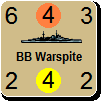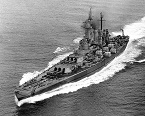Bullwinkle58
Posts: 11302
Joined: 2/24/2009
Status: offline

|
quote:
ORIGINAL: MateDow
quote:
ORIGINAL: Bullwinkle58
I don't know how different pykrete is than raw ice in its ability to squeeze, but I'll take your word for it. An 80/20 ice/sawdust ratio would be better I think, but how much I don't know. What I was somewhat reacting to was the picture of a BB being embedded in pykrete. A purpose-built core might work if it were designed from scratch to be encased in pykrete. A BB put inside the stuff? Disaster IMO. Just picturing how main seawater intakes would work if they had a vertical lift to get the engineroom . . .
I also don't know how the pykrete would work, but I can comment on lifting cooling water.
The rig that I work on has the main engines mounted 29 meters (95 feet) above the keel. We pump cooling water up for 8 3,500 kW generators for cooling. The saltwater cooling pumps are mounted down at the seachests, and then have the vertical rise.
The US Navy actually looked at using semi-submersible vessels (drilling rig types) as advanced airfields in the Indian Ocean around 2000. The chair of the Joint Chiefs came out to do a tour and ask questions about positioning and such. IIRC, they were talking about linking 6 together to make an 1800 foot runway for STOL operations. When they needed to move it, they would have divided into the component parts and transited at 6 knots. Even joined together, they could probably move at 3-4 knots if necessary.
Yeah, but that rig was designed that way. A WWII BB had seawater intakes already designed, and didn't have to haul massive pumps around to lift against a 100 foot head. And that's only one system. Lots of aux. seawater systems. Then you have to deal with refueling, stack gases, potable water, sewage, etc., etc. Take a Honda Civic, encase it in ice, see how well it does on the interstate. 
_____________________________
The Moose
|
 Printable Version
Printable Version



























 New Messages
New Messages No New Messages
No New Messages Hot Topic w/ New Messages
Hot Topic w/ New Messages Hot Topic w/o New Messages
Hot Topic w/o New Messages Locked w/ New Messages
Locked w/ New Messages Locked w/o New Messages
Locked w/o New Messages Post New Thread
Post New Thread